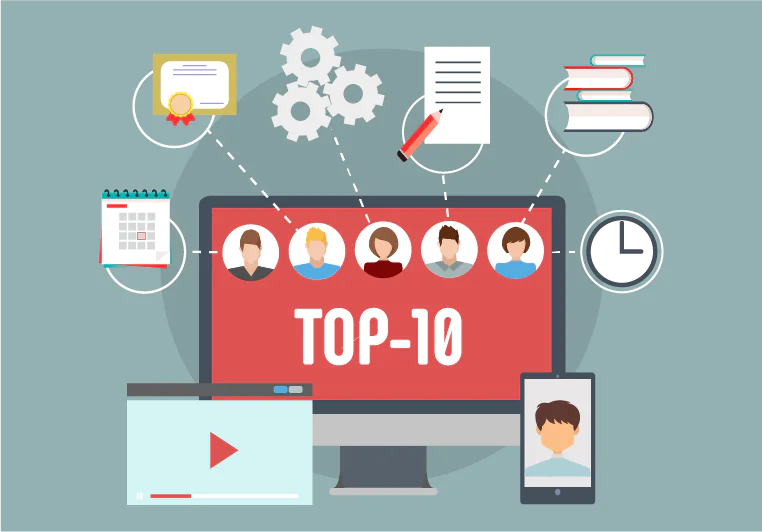According to the 2023 Training Industry Report, U.S. companies spent an average of $954 per employee on training, with each employee receiving approximately 57 hours of training that year. This reflects decreased spending per employee compared to previous years, even though the average training hours have increased.
But there is a need to shift the focus away from ‘how much’ to ‘how well’. Companies need to be more focused on measuring the effectiveness of the training program. So, how effective is your implemented learning program? Are your employees actually learning anything? Is the performance of employees improving, or is there no change? All of these are fundamental questions to ascertain the effectiveness of your learning program.
→ Try Smarter Employee Training Today
Need to Measure the Effectiveness of a Training Program
Organizations develop training programs and implement them for employees as a response to their problems in terms of performance, poor work quality and motivation. Businesses develop these goals for the training and then measure the effectiveness of these training in meeting the requirements.
There are numerous methods to evaluate the training effectiveness. These methods ideally provide information as well as feedback about the adequacy of the implemented training program along with parts which are ineffective. This helps management in addressing shortcomings with more training programs, specifically designed for the gaps identified by the measurement tools.
While an organization cannot control its customers, it can control the influence created by its employees. Empowering, educating, and engaging employees can be the foundation for the best customer experience. Such an impact involves not just the employees but everyone who is part of that organization and interacts with your business.
How to Measure the Effectiveness of a Training Program?
Gone are the days when learning was measured on the basis of multiple-choice questions. Such a kind of measurement is more focused on the retention (short-term) of knowledge in comparison to a more long-term ability to implement knowledge. Eventually, the corporate learning goal must not only get an investment return of training but also improve the learners’ skill set.
There is a need to know if all the efforts and commitment are leading to more positive ROI
There are various evaluation methods used. These methods help you ascertain the effectiveness and impact of the implemented training program. This is exactly what we will be discussing in this post.
We will get familiar with popular training evaluation models including Kirkpatrick’s Four-Level Training evaluation model – as it is now the industry standard for the evaluation of the training.
Methods to Measure the Effectiveness of a Training Program
Here are some proven methods to measure the effectiveness of a training program. These methods help organizations measure the results of the invested time, energy, and resources in terms of training initiatives meant to move the needle.
Knowledge Transfer
One of the best methods to measure the effectiveness of the training program is to know if trainees are capable of transferring their knowledge to others. The tendency to teach others is considered as the highest level of mastery of a subject. When learners transfer their learned knowledge, it puts them in a position to apply their learned concepts in real life.
This helps in two ways:
- It improves engagement among employees as they continue to learn from each other
- It enables training managers to ascertain if the employees are applying the learned concepts accurately and correctly within the organization.
Knowledge Transfer will help in knowing if all the employees possess the right knowledge and skills to meet performance targets.
Assessment Before and After Training
This can also be called skill assessment. One way to go about it is to utilize visual confirmations to ascertain the set of skills of employees along with their performance before and after the training program.
These skylines or snapshots of the ability of a learner can provide you with a clear picture of improvements that can be tied to training. To give you an example, if you are providing MS Excel training to your employees, measure their skills before the training and then retest their skills after the completion of training to see the delta.
There is so much that goes on during this period of before and after the training, it is imperative to use visual confirmations, assessing the set of skills of employees throughout the training period. This will help in establishing if the trainees have actually gained knowledge or skills from the training program.
Ranking Employees
Ranking employees or trainees after every training and on the basis of their mastery level of a given subject is highly important to measure training effectiveness.
It brings a lot more benefits than just measuring training effectiveness. Ranking lets you assess if the employee has made any improvements since the last training session. It also motivates employees to get better with each training program. It helps employees to come together, both in competition and cooperation, as they battle positively and also encourage each other to achieve the best results.
Kirkpatrick’s Four-Level Training Evaluation Model
The above-mentioned methods are proven to measure training effectiveness. However, Kirkpatrick’s Training evaluation model is considered the industry standard for the evaluation of the effectiveness of a training program.
Dr. Donald Kirkpatrick introduced the model. He was a professor at the University of Wisconsin, and this model was the subject of his Ph.D. dissertation in 1954.
1st Level – Reaction
This level is about understanding the reaction of your learners towards the training. It is the foremost step to fully understand how well your training is received. What are the learners’ reactions to it, and how can we figure out the gaps that must be improved?
This is the foundation of any training program. Thus, you might not get obvious or immediate insights in terms of ROI.
How to do it:
You can use the method of collecting questionnaires or by means of informal conversations among learners. The following are the basic topics:
- If the course is useful and relevant
- If the training is enjoyable
- If the training fully accommodates the pace and learning style of learners
- If learners wish to recommend the training program to other peers as well.
This collected data will help you see a bigger picture. This will enable you to learn the behavior of learners. This level of evaluation will help you understand the required skills needed to make the most of the designed course material. Some of the tools to measure the level of learners’ satisfaction include feedback forms, smiley sheets, post-training surveys, verbal reactions, or online evaluations. All you need to look for in this level is the positive reaction of people describing the training experience.
2nd Level – Learning
This level measures the skills and knowledge learners should gain from the training. For this measurement, you must plan a bit in advance like determining the course objectives.
The level must answer questions like: What knowledge should your learners absorb from this training? What skills should they master? What is the level of advancement in terms of performance or change in the skill set of learners after the training?
Once you get the required metrics using different assessment methods, determine if the training has successfully met these objectives. Also, identify the areas that must be improved within the scope of delivery method and content.
How to do it:
An easy way to do it is by conducting post/pre-tests or quizzes. You can run the quizz at the end of each training topic. This will help in verifying the know-how of learners in real time. The quiz can take the form of a written assessment, or it can be an on-the-job practical evaluation.
You may also use the LMS data to ascertain the rate of course completion and how long it takes for your learners to finish the course.
3rd Level – Behavior
This level is about evaluating the extent to which trainees have applied their learning or have improved their on-job behavior. Was the learning put into effect by learners? What knowledge or relevant skills were used? Can a learner accurately transfer their learning to other peers or situations?
This is an extension of level 2, in which you determine if the training created any impact on the attitude, behavior, and performance of learners at work.
This can be done by means of:
- Employee interviews
- Self-assessment questionnaires
- Supervisor feedback and report
- On job observation
- Peers’ informal feedback
- Customers’ feedback (complaints or comments)
However, make sure you have identified the basic clear criteria along with measurement standards.
4th Level – Results
At this level, the organization, business, and environment measure the impact of improved performance.
Jeffrey Berk suggests: “The Kirkpatrick training evaluation model is great but if there is no process to gauge the levels it may not prove to be practical”.
Thus, this level offers a practical way to measure the training ROI. It measures the tangible results brought to your business by the training. Below are some key metrics you would want to consider:
- Improved productivity and work quality
- Best business results like retention, customer satisfaction, sales, etc.
- Increased satisfaction, retention, and employee engagement
- Reduced duration, production cost, or error and rework
Remember, if you follow this industry’s standard evaluation model, it should always start from level 1 and then move up consecutively, depending on the financial budget and time. The information you will collect from each level will act as a foundation for the next level. Thus, every consecutive level offers more accurate measurement than the previous one and, for the same reason, requires more effort and time for its execution.
The Final Words
Measuring the performance and effectiveness of a training program can be daunting at times. This is particularly true if you wish to get instant ROI. However, a good place to begin is to go with the Kirkpatrick Model in addition to employee ranking, knowledge transfer, and assessment.
After all, people’s ability to understand new concepts or ideas greatly varies and there will be many factors that will affect how your learners will implement training in their own best interest.





